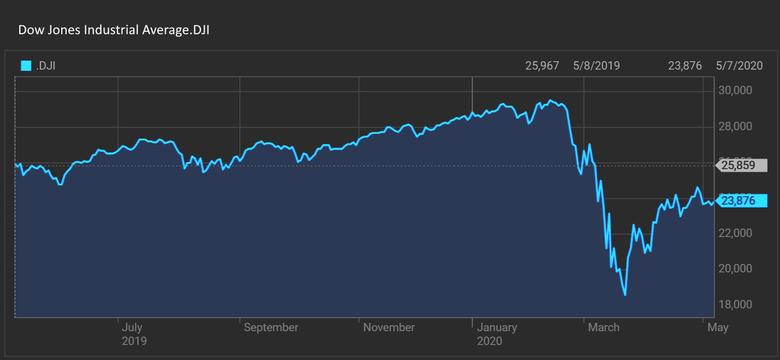
GLOBAL SHARES UP

REUTERS - MAY 7, 2020 - World shares rose on Thursday after China’s exports came in far stronger than expected, suggesting an economic recovery was under way, but the dollar fell from two-week highs as U.S. data showed millions more Americans joined the ranks of the unemployed.
Gold jumped 2% as the weak U.S. data heightened fears over a coronavirus-induced global downturn.
Initial U.S. jobless claims for unemployment benefits totaled a seasonally adjusted 3.169 million for the week ended May 2, down from a revised 3.846 million in the prior week, the Labor Department’s weekly report showed.
The data reinforced economists’ expectations of a protracted recovery for the U.S. economy, which is reeling from lockdowns across the country to slow the spread of the coronavirus pandemic.
“The pace is slowing down, which is providing some optimism that we are finally going to see things bottom out,” Ed Moya, senior market analyst at OANDA, said of the unemployment claims.
Investors took heart on news that Moderna Inc (MRNA.O) said it could start trials for a COVID-19 vaccine by early summer.
“The more vaccine trials that are out there, the more optimism that one will stick,” Moya said.
Technology stocks again led Wall Street higher as investors bet on a recovery, pushing the Nasdaq into the black for the year after equity markets had plunged from all-time highs in February.
Stocks globally were bolstered after Beijing reported a 3.5% rise in exports in April from a year earlier, confounding expectations of a 15.7% fall and outweighing a 14.2% drop in imports.
The strong showing boosted speculation China could recover from its coronavirus lockdown more quickly than expected and support global growth in the process.
The Dow Jones Industrial Average .DJI rose 211.25 points, or 0.89%, to 23,875.89, the S&P 500 gained 32.77 points, or 1.15%, to 2,881.19, and the Nasdaq Composite .IXIC added 125.27 points, or 1.41%, to 8,979.66,.
MSCI’s gauge of stocks across the globe gained 0.93%.
“It’s clear that this virus has gone from east to west and we are now seeing that in the data,” said Societe Generale’s Kit Juckes, pointing to the China numbers and relatively better purchasing managing data in countries such as Australia.
But with the full economic impact of the pandemic still to be seen and huge amounts of debt potentially pushing up borrowing costs, “the market is hugely split between die-hard bears and buy-on-dip buyers,” he added.
U.S. President Donald Trump said he would be able to report in about a week or two whether China is meeting its obligations under a trade deal, as Washington weighed punitive action against Beijing over its handling of the coronavirus outbreak.
And much of the economic data remained grim, with the Bank of England warning that the coronavirus crisis could cause the country’s biggest economic slump in 300 years.
“Despite their dizzying rally, we continue to be cautious on equities in the near term,” Luca Paolini, chief strategist at asset manager Pictet, said. “Markets seem to be overestimating the speed of economic recovery.”
WORLD’S BIGGEST BORROWER
Bond markets saw one of the largest shifts in a while after the U.S. Treasury said it would borrow $2.999 trillion during the June quarter, five times more than the previous single-quarter record. It will sell $96 billion next week alone, and a surprising amount of that will be at longer tenors, which in turn pushed up long-term yields and steepened the curve.
The 30-year bond US30YT=RR last rose 78/32 in price to yield 1.3214%, from 1.413%.
An early rise in Italy’s yields to over 2% reflected worries caused by a German court ruling this week targeting the European Central Bank’s bond purchase program.
The U.S. dollar fell from two-week highs as investors booked profits on the currency’s gains this week before Friday’s U.S. nonfarm payrolls report for April, which could show massive job losses amid the COVID-19 pandemic. The dollar index fell 0.323%, with the euro up 0.33% to $1.083. The euro was hurt by a gloomy economic outlook from the European Commission.
In commodity markets, gold eased on expectations that supplies will grow as bullion refineries resume operations, but then turned higher. U.S. gold futures settled 2.2% higher at $1,725.80.
Oil prices fell after being up more than 6% earlier Thursday as global demand worries offset news that Saudi Arabia increased its official crude selling price and the surprise rise in Chinese exports last month.
U.S. crude settled 44 cents lower at $23.55 per barrel and Brent was down 26 cents at $29.46.
-----








